1. New Fish Species
Researchers have recently discovered two new species namely Garra zubzaensis and Psilorhynchus kosygini, of torrent minnows in the pristine rivers of Nagaland.
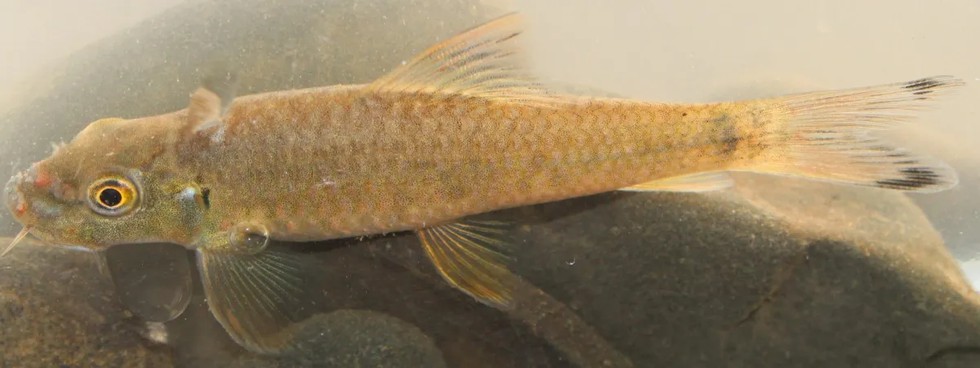
About New Fish Species:
- These are new species of torrent minnows.
- A torrent minnow is a small freshwater fish belonging to the genus Psilorhynchus within the family Psilorhynchidae.
- These fish are commonly found in fast-flowing streams, particularly in regions with strong currents such as rivers and mountain streams
Garra zubzaensis
- It was found in the Zubza River, a tributary of the Brahmaputra River in Kohima district.
- The river, with its mix of gravel, cobbles, and sand, provides an ideal habitat for this benthic species.
- Habitat: These fish are specially adapted to live in fast-flowing, rocky streams, using their gular discs—sucker-like structures—to cling to surfaces and forage for food.
Psilorhynchus kosygini
- It was discovered in the Tepuiki River, a tributary of the Barak River in Nagaland’s Peren district.
- It belongs to a genus known primarily from South Asia and Southeast Asia.
- Habitat: This species was found in the fast-flowing, shaded waters of the Tepuiki River, where it thrives in the river's gravel and rocky substrate.
2. National Centre of Excellence for AVGC
Recently, the Union Cabinet approved the establishment of a National Centre of Excellence (NCoE) for Animation, Visual Effects, Gaming, Comics, and Extended Reality (AVGC-XR) in Mumbai.

About National Centre of Excellence for AVGC:
- It will be set up as a Section 8 Company under the Companies Act, 2013 in India.
- The Federation of Indian Chambers of Commerce & Industry and Confederation of Indian Industry represent the industry bodies as partners with the Government of India.
- It aims at creating a world class talent pool in India to cater to the Indian as well as global entertainment industry.
- It is provisionally named the Indian Institute for Immersive Creators (IIIC), this center aims to revolutionize the AVGC sector and foster innovation in immersive technologies.
- It will be modeled after renowned institutions like the Indian Institutes of Technology (IITs) and Indian Institutes of Management (IIMs).
- Key objectives of the NCoE (IIIC):
- Focusing of creating Indian IP
- Leveraging our cultural heritage in new age
- Create a multiplier effect in the industry
- An industry led initiative, in partnership with state and academia
- Integrated focus on education, skilling industry, development, innovation
- Hub and spoke model of development to be followed
- IIIC as the hub and several center’s as its spokes dedicated innovation and research fund to promote start-up ecosystem
- Significance: This initiative is set to boost the economy while creating new job opportunities in the rapidly growing AVGC sector.
- As a global hub for filmmaking, India's advancements in technology and infrastructure will enable the production of high-quality content, positioning the country as a leader in technological innovation and creativity.
3. Casuarina Tree
Six years after the devastation caused by Cyclone Gaja, Vedaranyam taluk (Tamil Nadu), once known for its flourishing casuarina (savukku) plantations, is seeing a revival as farmers prepare for their first harvest in five years.
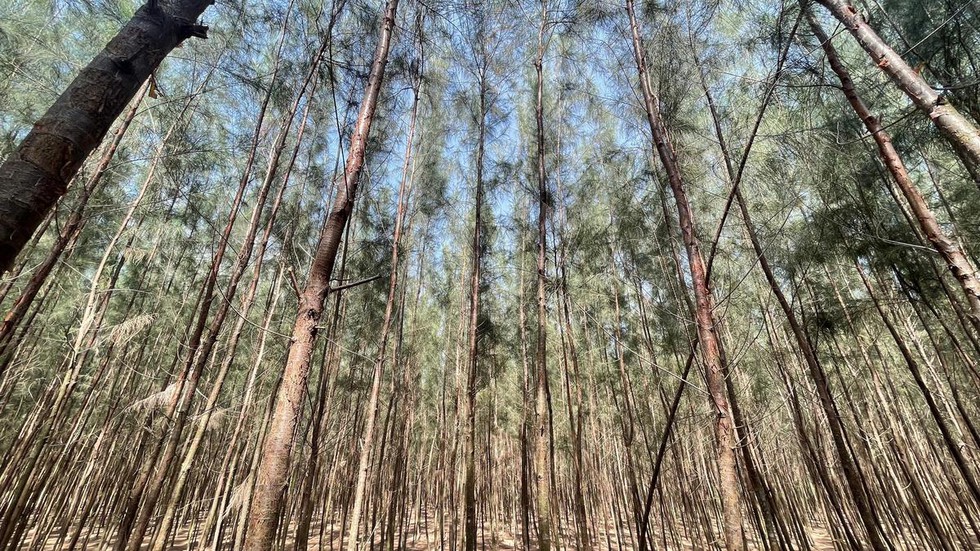
About Casuarina Tree:
- It is native to Australia and it was introduced in India around the 19th century.
- It is also known as kattadi and savukku.
- There are four cultivated species of casuarinas viz., Casuarina equisetifolia, Casuarina glauca, Casuarina cunninghamiana and Casuarina junghuhniana.
- The nitrogen fixing ability and adaptability to grow in a wide range of soil and climatic conditions including moisture and nutrient limited sites makes Casuarina a preferred choice for commercial and environmental planting programmes.
- Distribution: Casuarinas are widely planted in the tropics, subtropics and Mediterranean countries because of their ready adaptability to a variety of environmental conditions and also for their rapid growth performance.
- Climate:The trees are suited to a wide range of temperature from 10°C-33°C, from sea level upto 1500m and mean annual rainfall between 700 and 2000 mm.
- Soil:The trees are best suited to light soils. This species tolerates calcareous and slightly saline soils, but it is grown poorly on heavy soils such as clays.
- Uses
- Apart from fuel, the wood is extensively used for papermaking and of late is a preferred choice for biomass-based power generation.
- The straight cylindrical stems find use in rural house building and as scaffolds in construction sites.
- It is the principal species for developing shelterbelts in coastal areas and windbreaks for protecting agricultural crops.
- It also plays a key role in reclaiming mined areas and afforesting nutrient-poor sites.
4. Ethanol
Recently, the Union Minister of Consumer Affairs, Food and Public Distribution said that India has become the World’s third largest Producer and Consumer of Ethanol.
About Ethanol:
- It is an agricultural by-product which is mainly obtained from the processing of sugar from sugarcane, but also from other sources such as rice husk or maize.
- Ethanol appears as a clear colorless liquid with a characteristic vinous odor and pungent taste.
- Since ethanol is produced from plants that harness the power of the sun, it is also considered as renewable fuel.
- In India, ethanol is mainly produced from sugarcane molasses by fermentation process.
- Ethanol blending is the process of combining ethanol and petrol to use less fossil fuel while driving a vehicle.
- To supplement ethanol supplies, the Government of India has permitted the procurement of ethanol produced from sources other than molasses, which is known as first generation ethanol or 1G.
- Apart from molasses, ethanol can be derived from rice straw, wheat straw, maize cobs, corn stover, bagasse, bamboo and woody biomass, which are known as second generation ethanol sources or 2G.
- Applications
- Ethanol is an important industrial chemical; it is used as a solvent, in the synthesis of other organic chemicals, and as an additive to automotive gasoline.
Source : India Has Become World’s Third Largest Producer And Consumer Of Ethanol: Minister Pralhad Joshi
5. Canary Islands
Rescue teams resumed searching for at least 48 migrants who went messing the day before when their boat overturned just as it was being rescued off Spain's Canary Islands.

About Canary Islands:
- It is an archipelago located in the Atlantic Ocean.
- It is about 1300 km South of mainland Spain and 115 km West of the African coast (Morocco).
- The Canaries comprise the Spanish provinces of Las Palmas and Santa Cruz de Tenerife.
- These Islands were formed by volcanic eruptionsmillions of years ago.
- Climatic condition
- They have a subtropical climate. Temperatures are warm and show little seasonal variation.
- It has rich volcanic soils and mild temperatures that support a wide variety of vegetation that generally follows a zonal arrangement based on elevation.
What is an archipelago?
- It is a term used to describe a group or chain of islands that are closely scattered in a body of water, such as a sea, ocean, lake, or river.
- Formation: These islands are typically formed through geological processessuch as volcanic activity, tectonic movements, or the accumulation of sediment.
6. Key Facts about Lake Michigan
Researchers recently surveyed the bottom of Lake Michigan after spotting strange circles on the lakebed in 2022, and new observations show the circles are craters.
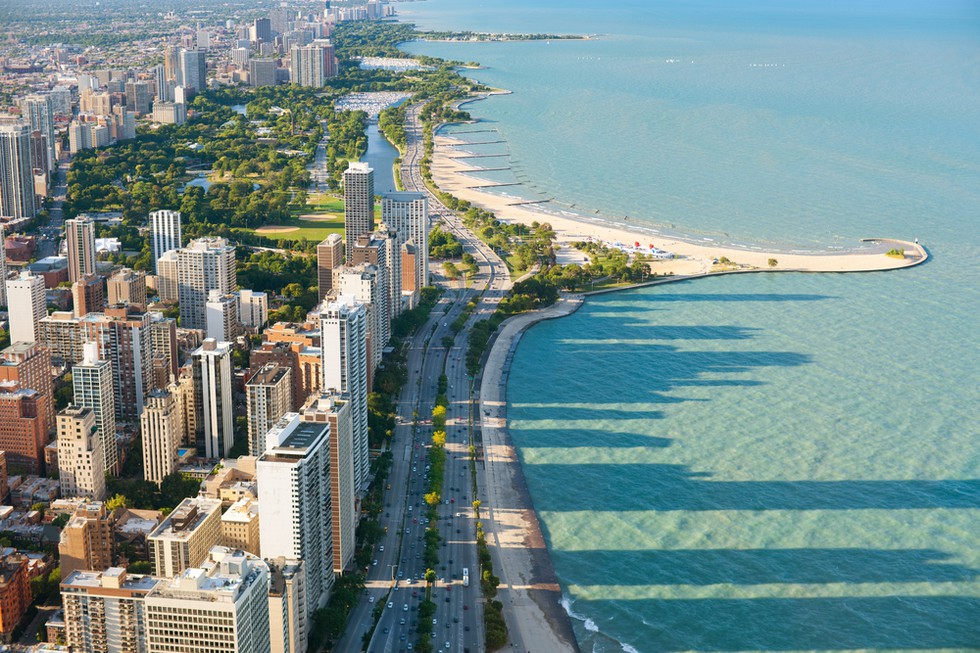
About Lake Michigan:
- It is the third largest of the five Great Lakes of North America and the only one lying wholly within the United States.
- It is the fourth largest freshwater lake and the fifth largest lake in the world ranked by surface area.
- The lake is 321 miles (517 km) long (north to south); it has a maximum width of 118 miles (190 km).
- Drainage basin area: 45,600 square mi (118,095 square km)
- Lake Michigan is connected directly to Lake Huron, into which it drains, through the broad Straits of Mackinac.
- This hydrologic connection through the Straits keeps the water levels of the two lakes in equilibrium, causing them to behave in many ways as though they are one lake.
- Water flows into Lake Michigan from several rivers in the 45,600 square mile Lake Michigan drainage basin, including the Fox-Wolf, the Grand, the Joseph, and the Kalamazoo rivers, among others.
- The lake boasts a variety of natural habitats, including tallgrass prairies, wide savannas, and the world’s largest freshwater sand dunes.
- It hosts a wealth of plant and animal species, many of which are rare or endangered (such as the Hine’s Emerald Dragonfly and the Dwarf Lake Iris).
7. Peechi -Vazhani Wildlife Sanctuary
A female elephant recently died due to apparent electrocution near a tribal colony close to the Peechi wildlife sanctuary in Kerala's Thrissur district.
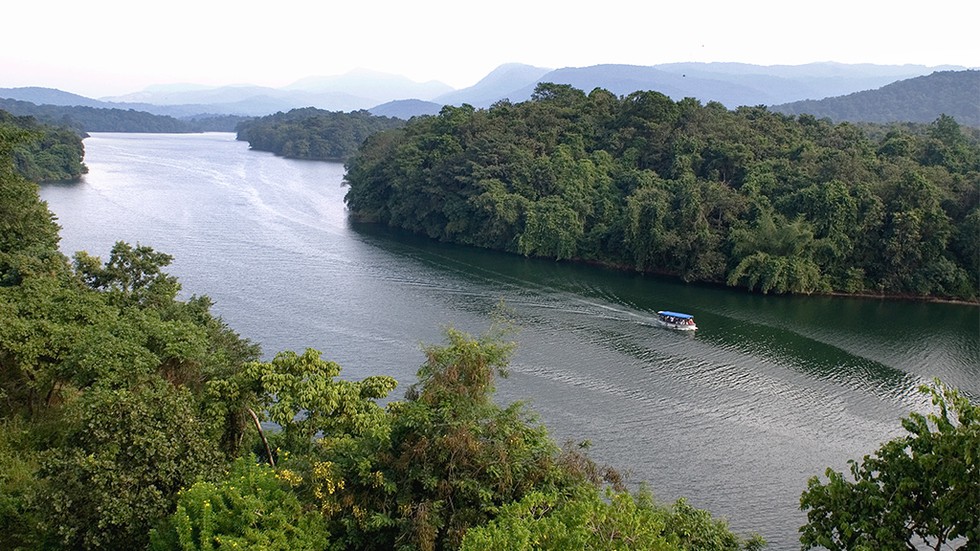
About Peechi -Vazhani Wildlife Sanctuary:
- Location: It is located in Thrissur District, Kerala.
- Spread across 125 sq. km, the Peechi-Vazhani Wildlife Sanctuary was established in 1958.
- It is situated in the catchment area of the Peechi and Vazhani Dams.
- It is part of the Palapilii-Nelliyampathy forests and forms the northern boundary of the Chimmini Wildlife Sanctuary.
- Vegetation: Forest Types include tropical evergreen forests, tropical semi evergreen forests, moist deciduous forests, etc.
- The terrain is undulating, the altitude varies from 100 to 914 m, with the highest peak being Ponmudi.
- Flora: There are more than 50 different kinds of orchids, innumerable rare medicinal plants, and trees of high commercial value like teak, rosewood, and so on.
- Fauna: The wildlife population includes over 25 types of mammals, including carnivores like the leopard, the tiger, and the fox, and herbivores like the elk, deer, barking deer, spotted deer, the gaur, and the elephant.
8. Key Facts about Jordan
Jordan becomes the first country in the world to eliminate leprosy, receiving official verification from the World Health Organisation (WHO).
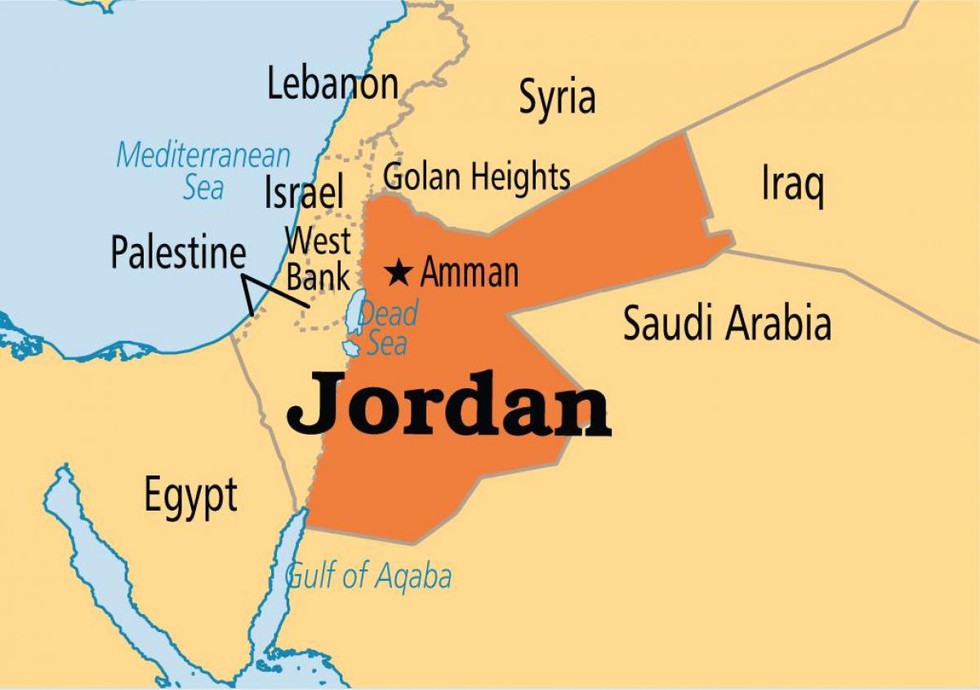
About Jordan:
- It is an Arab country of Southwest Asia, in the rocky desert of the northern Arabian Peninsula.
- It is named for the Jordan River, which passes on its western border.
- It occupies an area of around 91,880 sq. km.
- Bordering Countries: It is bounded to the north by Syria, to the east by Iraq, to the southeast and south by Saudi Arabia, and to the west by Israeland the West Bank.
- The capital and largest city in the country is Amman—named for the Ammonites, who made the city their capital in the 13th century BCE.
- Jordan has 16 miles (26 km) of coastline on the Gulf of Aqaba (Red Sea)in the southwest, where Al-ʿAqabah, it's only port, is located.
- Jordan has three major physiographic regions (from east to west): the desert, the uplands east of the Jordan River, and the Jordan Valley (the northwest portion of the great East African Rift System).
- The desert region is mostly within the Syrian Desert—an extension of the Arabian Desert—and occupies the eastern and southern parts of the country, comprising more than four-fifths of its territory.
- The Jordan Valley region contains the Dead Sea.
- Language: The official language is Arabic.
- Currency: Jordanian dinar
9. Key facts about Chikungunya
The chikungunya outbreak in Pune and nearby regions has been traced to the Indian Ocean lineage of the virus, according to scientists at the National Institute of Virology (NIV).
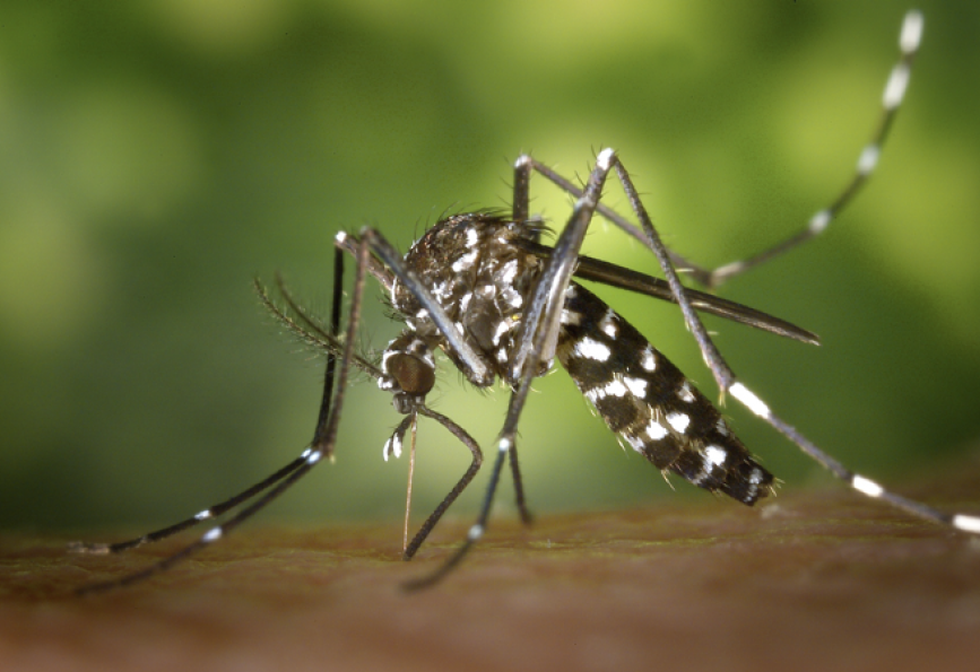
About Chikungunya:
- It is a viral diseasetransmitted to humans through the bites of mosquitoes infected with the chikungunya virus.
- The word comes from the African Makonde language and means "bent over in pain."
- Transmission:
- It is most commonly transmitted by mosquitoes, Aedes (Stegomyia) aegypti and Aedes (Stegomyia) albopictus, which can also transmit dengue and Zika viruses.
- It is not spread from person to person.
- It was first described during an outbreak in southern Tanzania in 1952 and has now been identified in nearly 40 countries in Asia, Africa, Europe and the Americas.
- Symptoms:
- Symptoms usually begin 4 to 8 days after a mosquito bite but can appear anywhere from 2 to 12 days.
- The most common symptom is an abrupt onset of fever, often accompanied by joint pain.
- Other symptoms include muscle pain, headache, nausea, fatigue, and rash.
- Serious complications are uncommon, but atypical severe cases can cause long-term symptoms and even death, especially in older people.
- Treatment:
- There is currently no approved vaccine or specific treatmentfor chikungunya virus infections.
- The goal of treatment for the infection is to relieve symptoms with rest, fluids and drugs.
Source : Chikungunya outbreak in Pune linked to resurgence of '2006 Indian Ocean' strain, warn NIV scientists
10. Mahakaleshwar Temple
Two people were killed when a boundary wall near the Mahakal Temple in Ujjain in Madhya Pradesh collapsed recently due to heavy rainfall.
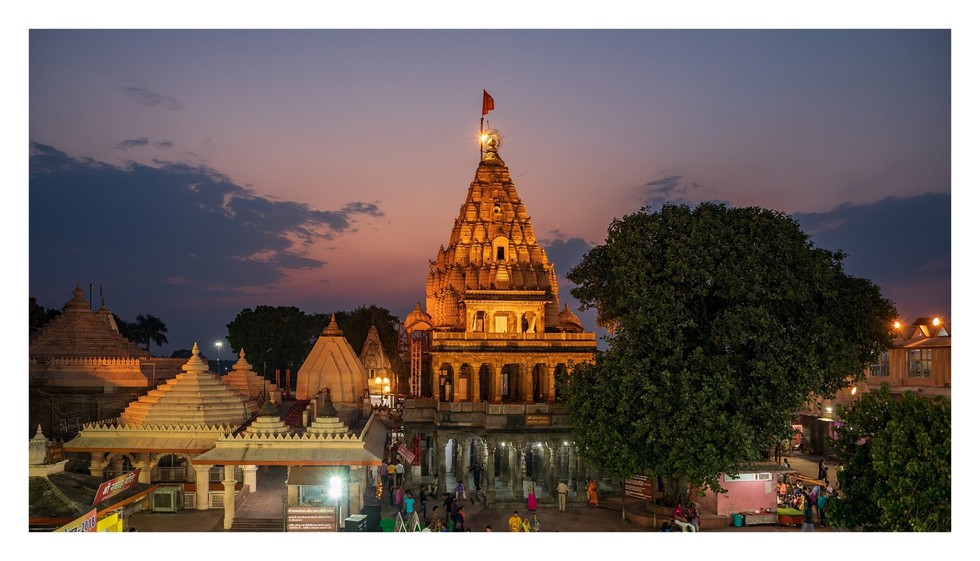
About Mahakaleshwar Temple:
- It is a Hindu temple dedicated to Lord Shiva.
- Location: It is located in the ancient city of Ujjain in the state of Madhya Pradesh.
- The temple is situated on the banks of the holy river, Shipra, tributary of Chambal river.
- It is one of the twelve Jyotirlingasof Lord Shiva.
- The real establishment date/period of the temple cannot be ascertained, but the earliest references to the Mahakal are from the 6th century BC. The temple, in its present form, was reconstructed in the 18th century AD.
- It is also known as one of the seven 'Mukti Sthal' or sacred places of liberation in India.
- Architecture:
- It is a five-storied The main shrine is located underground.
- The temple complex comes with a spacious courtyard that is adorned with finest sculptures that are believed to be influenced by Chalukya, Maratha, and Bhumija styles of structural design.
- The foundation and platform are built of stones. Most of the upper structure rests on the strong and well-designed pillars and plasters.
- It is complete with impressive lingam sculptures of Mahakaleshwar.
- The images of Ganesh, Parvati, and Karttikeya are installed in the west, north, and east of the sanctum sanctorum.
- The temple also houses a tank constructed in the sarvatobhadra style.


























































































































































.png)
.png)
.png)
.png)
.png)


.png)
.png)
.png)





.png)
.png)






.png)
.png)
.png)
.png)
.png)
.png)
.png)
.png)
.png)

.png)







.png)
.png)


.png)
.png)
.png)


.png)

.png)
.png)





.jpg)

.png)
.png)


.png)

.png)
.png)
.png)

.jpg)

.jpg)


.png)

.png)
.png)
.png)
.png)
.png)
.png)
.png)
.png)
.png)
.png)




.png)

.png)





.png)
.png)
.png)
.png)
.png)
.png)
.png)
.png)
.png)
.png)
.jpg)
.jpg)

.png)
.png)
.png)
.png)
.png)
.png)
.png)
.png)
.png)
.png)
.png)
.png)
.png)
.png)
.png)
.png)
.png)
.png)
.png)
.png)
.png)
.png)



.png)
.png)

.jpg)
.jpg)


.jpg)
.jpg)
.jpg)
.jpg)
.jpg)

.jpg)








.jpg)
.jpg)
.jpg)
.jpg)
.jpg)

















.jpg)
.jpg)







.jpg)


















.jpg)
.jpg)






























































































.jpg)
.jpg)


























.jpg)

.jpg)










.jpg)








.jpg)




.jpg)










.jpg)


















.jpg)












































.jpg)














.jpg)
.jpg)
.jpg)





.jpg)

.jpg)
.jpg)





































































.jpg)


































.jpg)
.jpg)
















































.jpg)












.jpg)


.jpg)




.jpg)
.jpg)
.jpg)

.jpg)
.jpg)
.jpg)
.jpg)

.jpg)
.jpg)
.jpg)

.jpg)
.jpg)
.jpg)
.jpg)
.jpg)
.jpg)
.jpg)
.jpg)

.jpg)


.jpg)
.jpg)
.jpg)
.jpg)
.jpg)
.jpg)
.jpg)
.jpg)
.jpg)
.jpg)











.jpg)
.jpg)





.jpg)
.jpg)
.jpg)
























.jpg)
























.jpg)









.jpg)
.jpg)







.jpg)
.jpg)









































.jpg)
.jpg)
.jpg)
.jpg)
.jpg)

.jpg)
.jpg)
.jpg)
.jpg)
.jpg)


.jpg)
.jpg)
.jpg)
.jpg)
.jpg)

.jpg)
.jpg)
.jpg)
.jpg)
.jpg)
.jpg)
.jpg)
.jpg)
.jpg)
.jpg)
.png)

.png)
.png)

.png)
.png)
.png)
.png)


.jpg)
.jpg)

.jpg)
.jpg)
.jpg)

.png)
.png)
.png)
.png)
.png)
.png)
.png)

.png)
.png)
.png)
.png)
.png)
.png)
.png)
.png)
.png)
.png)





































































-min.png)



.png)




.png)








































